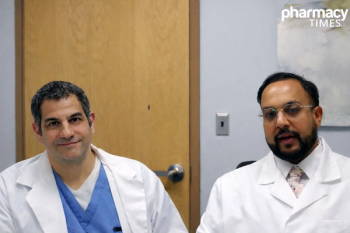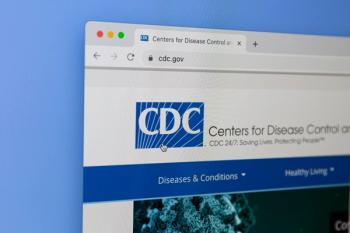
Study: Pre-Surgery Immunotherapy May Help Destroy High-Risk Breast Cancer
The findings are part of the I-SPY clinical trial and were presented at the American Association for Cancer Research virtual annual meeting.
Women with high-risk human epidermal growth factor receptor 2 (HER2)-negative breast cancer who were treated with immunotherapy and a poly ADP ribose polymerase (PARP) inhibitor, in addition to chemotherapy, have a higher rate of eradicating cancer from the breast and lymph nodes, according to a new study.
The findings are part of the I-SPY clinical trial and were presented at the American Association for Cancer Research virtual annual meeting.
Some women with HER2-negative breast cancer are treated with chemotherapy before surgery, in an effort to shrink the tumor and guide post-surgical treatment plans. In some women, this pre-surgery treatment destroys all evidence of the tumor, a condition called “pathologic complete response” (pCR), which typically signals increased overall survival.
According to the I-SPY 2 clinical trial, for women with HER2-negative breast cancer who are treated before surgery, the average pCR rate increases from 22% among those given standard-of-care chemotherapy to 37% in patients who received the immunotherapy drug durvalumab plus the PARP inhibitor olaparib, in addition to chemotherapy.
Durvalumab is a checkpoint inhibitor immunotherapy that uses immune system T cells against tumors by inhibiting a protein on the surface of T cells.
In the experimental arm of the study, 73 patients were given durvalumab, olaparib, and paclitaxel chemotherapy followed by doxorubicin/cyclophosphamide chemotherapy. At the same time, 229 patients in the control arm received the standard paclitaxel treatment in addition to doxorubicin/cyclophosphamide. The researchers analyzed the results for all HER2-negative patients, as well as the results for triple-negative and estrogen receptor (ER)-positive subsets.
Women with triple-negative breast cancer (TNBC) who received the combination treated saw a pCR rate of 47%, compared with 27% of those administered the standard chemotherapy. Participants in the experimental arm with estrogen-positive/HER2-negative cancer experienced a pCR rate of 28%, compared with 14% for those in the control arm.
“The results provide further evidence for the clinical value of immunotherapy in early stage breast cancer and suggest new avenues to use these drugs, particularly in (ER)-positive/HER2-negative breast cancers,” Lajos Pusztai, MD, director of breast cancer translational research at the Yale Cancer Center, said in a statement.
Notably, patients in the experimental arm were also more likely to experience grade 3 serious adverse events than those in the control arm—58% and 41%, respectively.
The investigators also noted biomarkers that could potentially identify patients who are most likely to benefit from durvalumab and olaparib treatment. Among the patients with estrogen-positive/HER2-negative cancers, the MammaPrint ultra-high subset saw the most benefit from the combination therapy, with a pCR rate of 64%. In those with TNBC, tumors with a low CD3/CD8 ratio, high Macrophage/Tcell-MHS class II ratio, and high proliferation seemed to have benefited preferentially from the duvalumab and olaparib addition, according to the study.
REFERENCE
Yale Cancer Center Study Shows Immunotherapy Prior to Surgery May Help Destroy High-Risk Breast Cancer [news release]. Yale Cancer Center; April 27, 2020.
Newsletter
Stay informed on drug updates, treatment guidelines, and pharmacy practice trends—subscribe to Pharmacy Times for weekly clinical insights.














































































































































































































